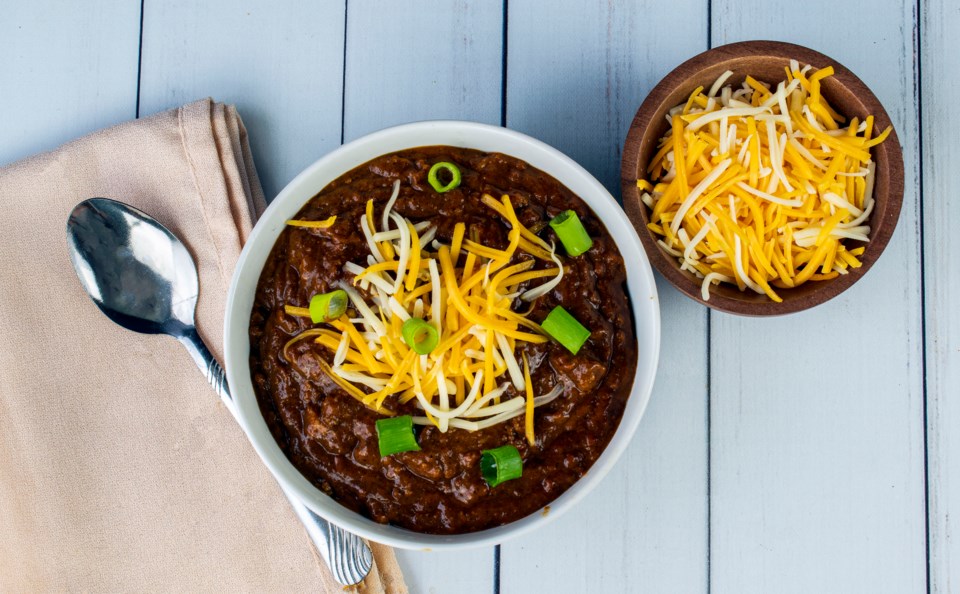Chili is something that many folks take seriously, especially as the weather gets cooler. But Texans are pretty specific about what exactly goes in the hearty dish.
As a native Coloradan, chili was something I ate religiously growing up during fall and winter — it was the official Sunday football meal. There was nothing better than sitting on the couch with a bowl of tomato-based chili and a side of cinnamon rolls (I won’t even get started on that Midwest phenomenon). But moving to Texas brought on a huge culture shock moment — beans do not belong in chili.
If you go pretty much anywhere in Texas you will find chili ingredients simple and rarely differing: meat, sauce, peppers and spices.
Carol Hancock, President and CEO of the International Chili Society, told Texas Living there is a specific reason why Texas chili contains no beans: it’s tradition.
“I think there is probably no consensus on one idea (of what defines chili), but the reason why we don’t allow beans in chili is number one: real Texas chili has always been known as meat and the sauce with peppers,” Hancock said. “Beans don’t come into play at the cook-off because if our judges are trying to determine a taste, beans are a dominant flavor and we wouldn’t get the pure chili taste.”
Kent Finlay, the late singer and songwriter, was passionate about the Texas chili legacy, as apparent in his song “If you know Beans about Chili... you know Chili has no Beans.” According to Kent, "If you know beans about chili, you know it didn't come from Mexico. Chili was God's gift to Texas or maybe it came from down below. And chili doesn't go with macaroni, and darned Yankees don't go with chili queens; so if you know beans about chili, you know that chili has no beans."
Maybe I’ve seen too many Westerns, but didn’t cowboys put beans in their chili? The answer is yes.
According to the Chili Appreciation Society International, Texas chili has a long history beginning with "Chili Queens" who operated on Military Plaza in San Antonio from the mid-19th century to the early 20th century. These enterprising women specialized in a meat dish known as "Chili Con Carne," highlighting the combination of chili peppers and beef. Naturally, frijoles (beans) were offered as a customary side dish.
The proliferation of chili across Texas and the nation can be linked to the cattle drives of the mid to late 19th century. Chili became a staple food in chuck wagons during these drives, as native peppers and onions were abundant along the trails. Cowboys would often mix the chili and beans together on a tin plate.
So where did the no-bean rule come from?
The first recorded chili contest was conducted on Oct. 4, 1952, at the State Fair of Texas. But the contest rules stipulated no beans. Joe E. Cooper, author of a book on chili called, With or Without Beans, was named chairman of the contest.
“One purpose of the contest is to restore chili’s lost prestige in things gastronomic,” Cooper said. “The noble institution of a bowl of chili must not be abandoned to perish on the vine. Real, sure-enough Texas-style chili must have the strength to chin itself and possess the authority of a Marine buck sergeant.”
So really, beans or no beans — it really doesn’t matter unless you’re entering a competition (even in Texas!). If you want to stick to the traditional route go for no beans. But if you want to fuel your inner cowboy throw those beans in there, I won’t judge you. And if you’re feeling really wild, make some gooey cinnamon rolls to eat with it.
This article was originally published on Nov. 16, 2023.




